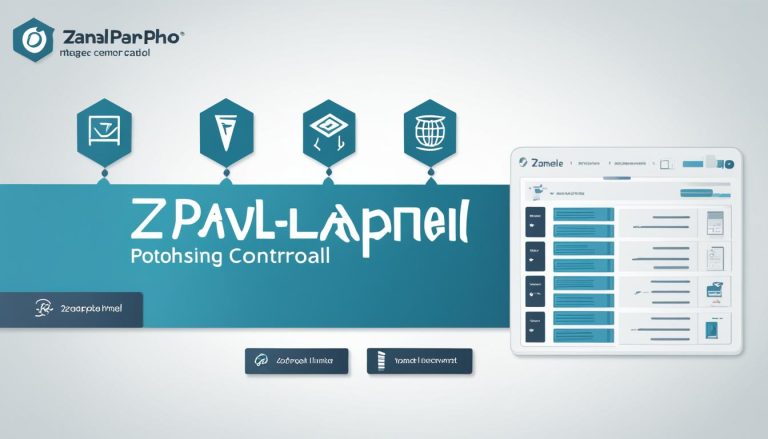Understanding What is a Worker Process Explained
In the world of web development, worker processes are an essential component that plays a crucial role in optimizing server performance and enhancing the user experience. But what exactly is a worker process and what is its function? In this article, I will delve into the intricacies of worker processes, explaining their definition, functionality, and importance in web development.
A worker process can be understood as a separate instance of a program that runs concurrently to perform tasks in parallel. It serves as the execution environment for all websites and applications configured in Internet Information Services (IIS). By handling tasks efficiently, worker processes ensure the smooth operation of web servers.
Key Takeaways:
- Worker processes are essential components in web development that provide the execution environment for websites and applications.
- They play a crucial role in optimizing server performance and handling tasks efficiently.
- A worker process is a separate instance of a program that runs concurrently to perform tasks in parallel.
- Understanding worker processes is crucial for developers to enhance server performance and improve the overall user experience.
- By implementing worker processes effectively, web developers can ensure the stable operation of web servers and maintain optimal performance.
Importance of Worker Processes in Web Development
In the realm of web development, worker processes play a crucial role in optimizing server performance and enhancing the user experience. They allow for the efficient utilization of server resources, such as CPU utilization and memory footprint. By distributing and managing incoming client requests effectively, worker processes enable web servers to handle high levels of concurrency and improve website responsiveness.
One of the key advantages of worker processes is their ability to provide valuable information about server health through the API. This information can be used to monitor and analyze server performance, making it easier for developers to identify and address potential bottlenecks or issues.
By understanding the importance of worker processes, developers can take advantage of their role in search engine optimization (SEO). The efficient handling of client requests ensures that web pages load quickly, improving the site’s ranking in search engine results and reducing bounce rates.
Optimal Server Performance and Resource Utilization
Worker processes allow developers to achieve optimal server performance by effectively utilizing available resources. By dividing the workload and processing tasks in parallel, worker processes minimize CPU and memory usage, ensuring that the server operates efficiently even under heavy traffic loads.
Furthermore, the ability to dynamically adjust the number of worker processes based on server load and demand allows for seamless scalability. Developers can scale up or down the number of worker processes as necessary, ensuring that the server can handle varying levels of incoming client requests.
Improved Website Responsiveness
Worker processes play a vital role in improving website responsiveness, as they enable the server to handle concurrent client requests more effectively. By distributing the workload across multiple worker processes, web servers can respond to client requests in a timely manner, resulting in faster page loading times and a smoother user experience.
Quick website responsiveness is crucial for user satisfaction and engagement, as slow-loading pages can lead to higher bounce rates and diminished user trust. By optimizing the utilization of worker processes, developers can ensure that their websites are capable of handling a large number of concurrent connections without sacrificing performance.
Effective Handling of Incoming Client Requests
Worker processes play a vital role in efficiently handling incoming client requests. By processing requests in parallel, worker processes ensure that requests are served promptly, minimizing latency and improving the overall user experience.
The ability to handle a large number of concurrent client requests is particularly important for applications that rely on real-time data or interactive features. Worker processes enable web servers to efficiently manage multiple connections simultaneously, providing an uninterrupted experience for users interacting with the application.
Understanding the importance of worker processes in web development is fundamental to optimizing server performance, improving website responsiveness, and effectively handling incoming client requests. By utilizing worker processes effectively, developers can enhance the user experience and ensure the smooth operation of web applications.
Definition and Functionality of Worker Processes
In web development, worker processes are essential components that allow for efficient handling of incoming client requests. They can be defined as separate instances of a program that run concurrently to perform tasks in parallel. The main purpose of worker processes is to optimize server performance and ensure the server can handle multiple simultaneous connections without becoming overwhelmed.
The functionality of worker processes may vary depending on the implementation, but in general, they process client requests, distribute the workload, and ensure efficient resource utilization. They play a crucial role in improving website responsiveness and overall user experience.
Different techniques can be used to implement worker processes, such as the multi-process model, multi-threaded model, or asynchronous/event-driven model. These techniques determine how tasks are delegated and executed, providing developers with flexibility in designing their applications.
Overall, worker processes are indispensable in web development as they enable efficient handling of client requests and optimize server performance. By understanding their definition and functionality, developers can leverage this powerful tool to create high-performing web applications.
| Worker Process Definition | Worker Process Functionality |
|---|---|
| Separate instances of a program that run concurrently | Process client requests |
| Optimize server performance | Distribute workload |
| Ensure server can handle multiple simultaneous connections | Efficient resource utilization |
Worker Processes in IIS and Application Pools
In the context of Internet Information Services (IIS), worker processes play a crucial role in providing the execution environment for websites and applications. Each worker process is associated with an application pool, which allows web applications to behave independently of each other.
By filtering worker processes by application pool, developers can obtain valuable information about the running worker processes for a specific application pool. This level of granularity enables efficient monitoring and management of the server, ensuring optimal performance and responsiveness.
Understanding the relationship between worker processes and application pools is essential for maintaining the stability and scalability of web servers. By effectively managing the distribution of workloads and resources, developers can enhance the overall user experience and meet the demands of high-traffic websites and applications.
Let’s take a closer look at the structure and functionality of worker processes in the context of IIS and how they interact with application pools:
The Relationship between Worker Processes and Application Pools
In IIS, an application pool acts as a container that holds one or more worker processes, allowing them to operate independently of each other. Each application pool is configured with its own set of parameters, such as CPU and memory limits, recycling intervals, and identity settings.
When a web application is assigned to an application pool, it is associated with the worker processes contained within that pool. This association enables the application to utilize the resources allocated to the specific pool, ensuring isolation and security between different applications.
By separating web applications into distinct application pools, potential issues with one application do not affect the performance or availability of other applications. It also allows for easier troubleshooting and deployment of updates or changes to individual applications without impacting the entire server.
| Worker Processes in IIS | Application Pools |
|---|---|
| Associated with websites and applications in IIS. | Container that holds worker processes. |
| Provide the execution environment for websites and applications. | Allow web applications to behave independently of each other. |
| Can be monitored and managed individually. | Configured with parameters such as CPU and memory limits. |
| Help optimize server performance and resource utilization. | Ensure isolation and security between different applications. |
Managing Worker Processes in IIS
When it comes to managing worker processes in IIS, developers have a range of functionalities at their disposal. One key functionality is the ability to terminate a worker process, which can be extremely useful in scenarios where a process becomes unresponsive or requires restarting for maintenance purposes.
To terminate a specific worker process in IIS, developers can simply send a DELETE request to the worker processes endpoint. This action effectively terminates the targeted process and allows for immediate resolution of any issues it may have been causing.
The ability to terminate worker processes holds great significance in ensuring the stable operation of web servers and maintaining optimal performance. By swiftly identifying and resolving problematic worker processes, developers can prevent any negative impact on the server’s functionality and the overall user experience.
Terminating a Worker Process in IIS:
- Send a DELETE request to the worker processes endpoint.
- Specify the worker process ID or any other unique identifier.
- Confirm the termination of the selected worker process.
Terminating a worker process allows developers to address any unresponsive processes or conduct necessary maintenance effectively. It is a valuable tool in managing IIS, ensuring the smooth operation of web servers, and sustaining optimal performance.
By employing these management capabilities, developers can effectively monitor and control worker processes in IIS, maintaining a stable and responsive web server environment.

Worker Processes in Gunicorn for Python Applications
In the context of Python web applications, Gunicorn serves as a powerful WSGI server. It enables developers to efficiently handle multiple concurrent client requests, ensuring smooth and responsive web applications. A crucial aspect of Gunicorn’s functionality lies in its utilization of worker processes.
When using Gunicorn, developers have the ability to specify the number of worker processes to spawn. This feature allows the server to effectively handle high levels of concurrency, maximizing performance and scalability. Each worker process operates independently, handling incoming requests and distributing the workload.
The incorporation of worker processes in Gunicorn is instrumental in maximizing server resources and optimizing web application performance. By utilizing multiple worker processes, developers can achieve efficient request handling, improve response times, and enhance the overall user experience.
Worker Process vs. Application Pool vs. Application Domain
While the terms worker process, application pool, and application domain may seem similar, they actually represent distinct concepts in web development and server management. Each component plays a crucial role in ensuring the efficient operation of websites and applications. Let’s explore the differences between these three entities:
Worker Process: A worker process provides the execution environment for websites and applications. It acts as a standalone instance, responsible for processing client requests and carrying out tasks. Multiple worker processes can run simultaneously to handle concurrent connections and maximize server performance.
Application Pool: An application pool is a logical container that separates and isolates web applications. It allows applications to run independently of each other, providing enhanced security, scalability, and resource management. Each application pool is associated with one or more worker processes.
Application Domain: An application domain represents a logical isolation within a process where managed code is executed. It provides a boundary between different web applications running within the same worker process. Application domains offer increased stability and security by isolating the execution of code and preventing it from affecting other applications.
Now, let’s summarize the differences between worker processes, application pools, and application domains:
| Component | Description |
|---|---|
| Worker Process | Provides the execution environment for websites and applications. |
| Application Pool | Separates and isolates web applications for enhanced security and resource management. |
| Application Domain | Represents a logical isolation within a worker process for executing managed code. |
In conclusion, while worker processes, application pools, and application domains share some similarities in their role within web development and server management, they serve distinct purposes. Understanding the differences between these components is vital for optimizing server performance, ensuring proper resource allocation, and maintaining the stability and security of web applications.
Conclusion
In conclusion, worker processes play a crucial role in the successful operation of web servers and the efficient handling of client requests. By understanding their role and functionality, developers can optimize server performance, enhance the user experience, and ensure smooth web application operation.
Worker processes allow for the optimal utilization of server resources, such as CPU utilization and memory footprint, resulting in improved performance. They enable high levels of concurrency, allowing web servers to handle multiple simultaneous connections without becoming overwhelmed.
Incorporating worker processes in web development is essential in today’s highly demanding and dynamic online landscape. By leveraging their power, developers can ensure the smooth execution of tasks, enhance website responsiveness, and provide an exceptional user experience.
FAQ
What is a worker process?
A worker process is an essential component in web development that provides the execution environment for all websites and applications configured in Internet Information Services (IIS).
What is the importance of worker processes in web development?
Worker processes are important in web development as they allow for the efficient utilization of server resources, optimize server performance, improve website responsiveness, and handle incoming client requests effectively.
What is the functionality of worker processes?
Worker processes are separate instances of a program that run concurrently to perform tasks in parallel. They process client requests, distribute the workload, and ensure the server can handle multiple simultaneous connections without becoming overwhelmed.
How are worker processes used in IIS and application pools?
In the context of Internet Information Services (IIS), worker processes provide the execution environment for websites and applications, while application pools separate and isolate web applications.
How can I manage worker processes in IIS?
Developers have the ability to terminate a worker process in IIS by sending a DELETE request to the worker processes endpoint. This feature can be useful in cases where a worker process becomes unresponsive or needs to be restarted for maintenance purposes.
How are worker processes used in Gunicorn for Python applications?
In Gunicorn, worker processes are used to handle multiple concurrent client requests. Developers can specify the number of worker processes to spawn when starting Gunicorn, enhancing the performance and scalability of Python web applications.
What is the difference between worker processes, application pools, and application domains?
Worker processes provide the execution environment for websites and applications, application pools separate and isolate web applications, and application domains are logical isolations within a process where managed code is executed.
What is the conclusion and summary of worker processes?
Worker processes are integral to the successful operation of web servers and the efficient handling of client requests. They allow for optimal resource utilization, improved performance, and high levels of concurrency.
- About the Author
- Latest Posts
Mark is a senior content editor at Text-Center.com and has more than 20 years of experience with linux and windows operating systems. He also writes for Biteno.com






